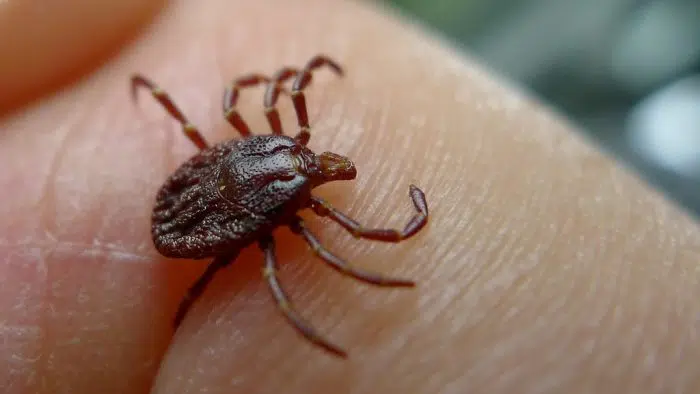OTTAWA – In observance of Lyme Disease Awareness month and the warmer weather our area has been
experiencing, it’s important to take precautions against tick bites and the illnesses they can carry. Illnesses
like Rocky Mountain Spotted Fever, Lyme disease, Tularemia, and Ehrlichiosis can cause mild symptoms
or severe infections. In LaSalle County, Lyme disease is the tick-related illness seen most commonly. There
were 11 cases of Lyme disease confirmed in the county in 2024.
Lyme disease is caused by bacteria called Borrelia burgdorferi and rarely, Borrelia mayonii. Lyme disease
is transmitted to humans through the bite of infected blacklegged ticks. The risk of exposure to ticks is
greatest in the woods and in the edge area between lawns and woods; however, ticks can also be carried
by animals onto lawns and gardens and into houses by pets. Campers, hikers, outdoor workers, and others
may be exposed to infected ticks in wooded, brushy, and grassy places. People who spend time in heavily
wooded areas where infected ticks are common are at higher risk for exposure.
“There has been a noticeable increase in the number of Lyme Disease cases in LaSalle County over the last
two years. The greatest risk of being bitten exists in the spring, summer, and fall. Apply an EPA-registered
Use insect repellent when spending time outdoors. Additionally, wear closed-toed shoes and light-colored
clothing so you can see ticks on your clothing. When hiking, stay in the center of trails, avoiding wooded
and brushy areas with high grass. After spending time in areas where ticks could be found, everyone
should conduct a thorough tick-check on themselves, their children, and their pets. Removing ticks
within a 24-hour period reduces the risk of potential disease transmission.
Talk to your doctor if you have been bitten by a tick and experience fever, chills, muscle and joint aches, or a rash,” says Jennifer
Arroyo, Director of Environmental Health at LaSalle County Health Department.
Simple tips to avoid tick exposure include:
• Wear light-colored clothing to make ticks easier to find. Tuck long pants into socks and
boots.
• Apply an EPA-registered insect repellent containing 20% DEET, picaridin, IR3535, or
Oil of Lemon Eucalyptus according to label directions.
• Use products that contain permethrin to treat clothing and gear, such as boots, pants, socks, and
sleeping tents. Or look for clothing pre-treated with permethrin.
• Walk in the center of the trails. Avoid wooded, bushy areas with high grass and leaf litter.
• Conduct full-body tick checks on family members (underarms, ears, belly button, behind
knees, between legs, waist, hair, and scalp) every two to three hours. Also, check any
gear or pets taken on outings.
• Put your clothes in the dryer on high for 10 minutes (or one hour for damp clothes) to
kill ticks.
• Bathe or shower within two hours after coming indoors.
• If you find a tick on yourself, it is often helpful to keep the tick for species identification. Place the tick in rubbing alcohol or in a sealed bag/container to bring to your healthcare
provider or local health department for submission to IDPH. A submission form can be
found on the IDPH website.
If you find a tick attached to your skin, there’s no need to panic. Remove the tick as soon as possible to
reduce your chances of getting an infection from the tick bite. The CDC recommends the following
steps to remove a tick:
1. Use fine-tipped tweezers to grasp the tick as close to the skin’s surface as possible.
2. Pull upward with steady, even pressure to remove the tick. Avoid twisting or jerking. If the
mouthparts remain in the skin, leave them alone. In most cases, they will fall out in a few days.
Don’t use nail polish, petroleum jelly, or a hot match to make the tick detach.
3. Clean the bite area and your hands with rubbing alcohol or soap and water.
If you become ill with a fever and/or rash after being in an area where ticks may be, please contact your
health care provider. The most common symptoms of tick-related illnesses can include fever, chills, aches,
pains, and rash (not in all cases). Early recognition and treatment of the infection decreases the risk of
serious complications.
For additional information, please contact the LaSalle County Health Department at 815-433-3366 or visit
their website at www.lasallecountyil.gov. Also, please visit the Illinois Department of Public Health’s
(IDPH) interactive tick surveillance map created by their Vector Control staff. The map shows what ticks
have been identified in Illinois by county.
